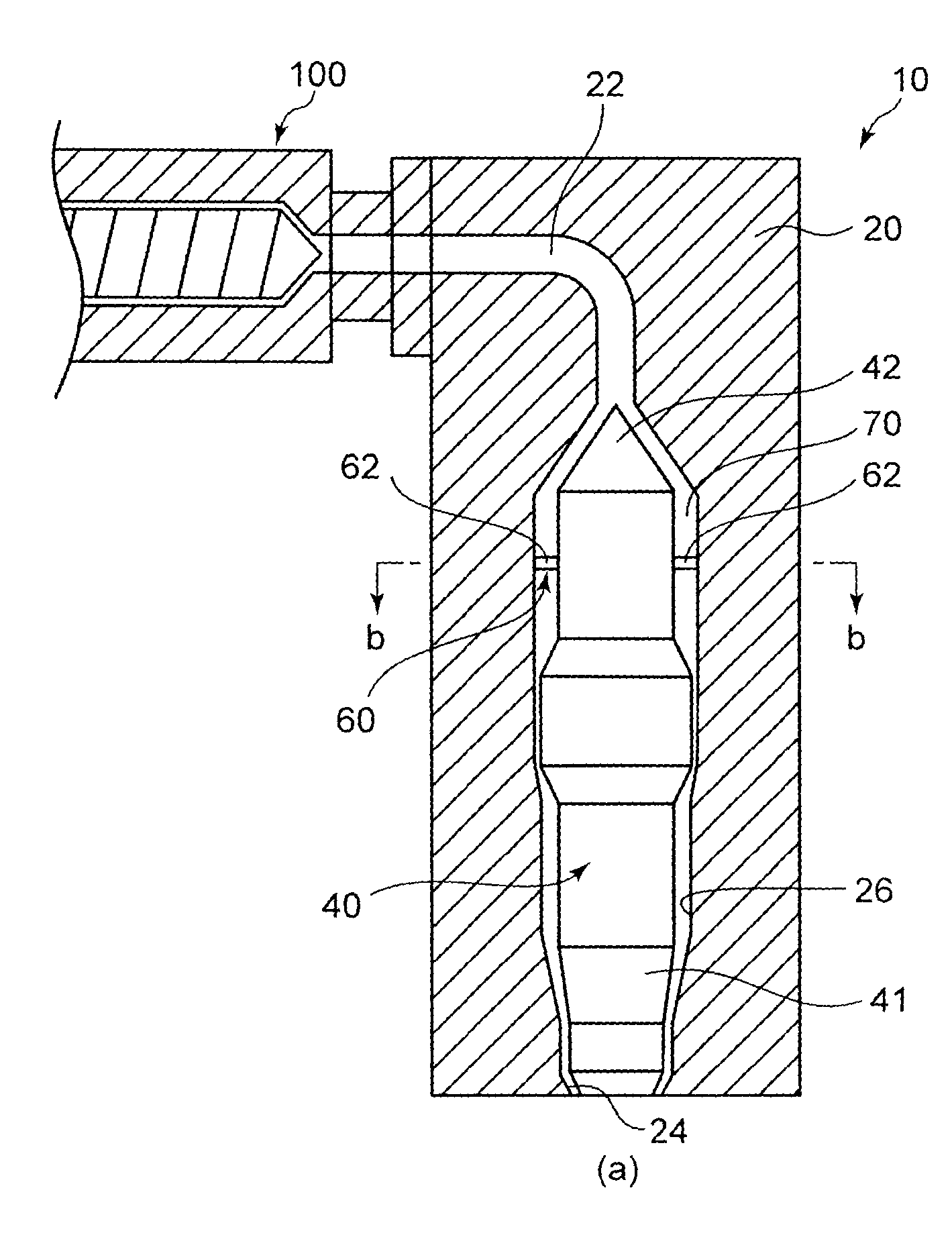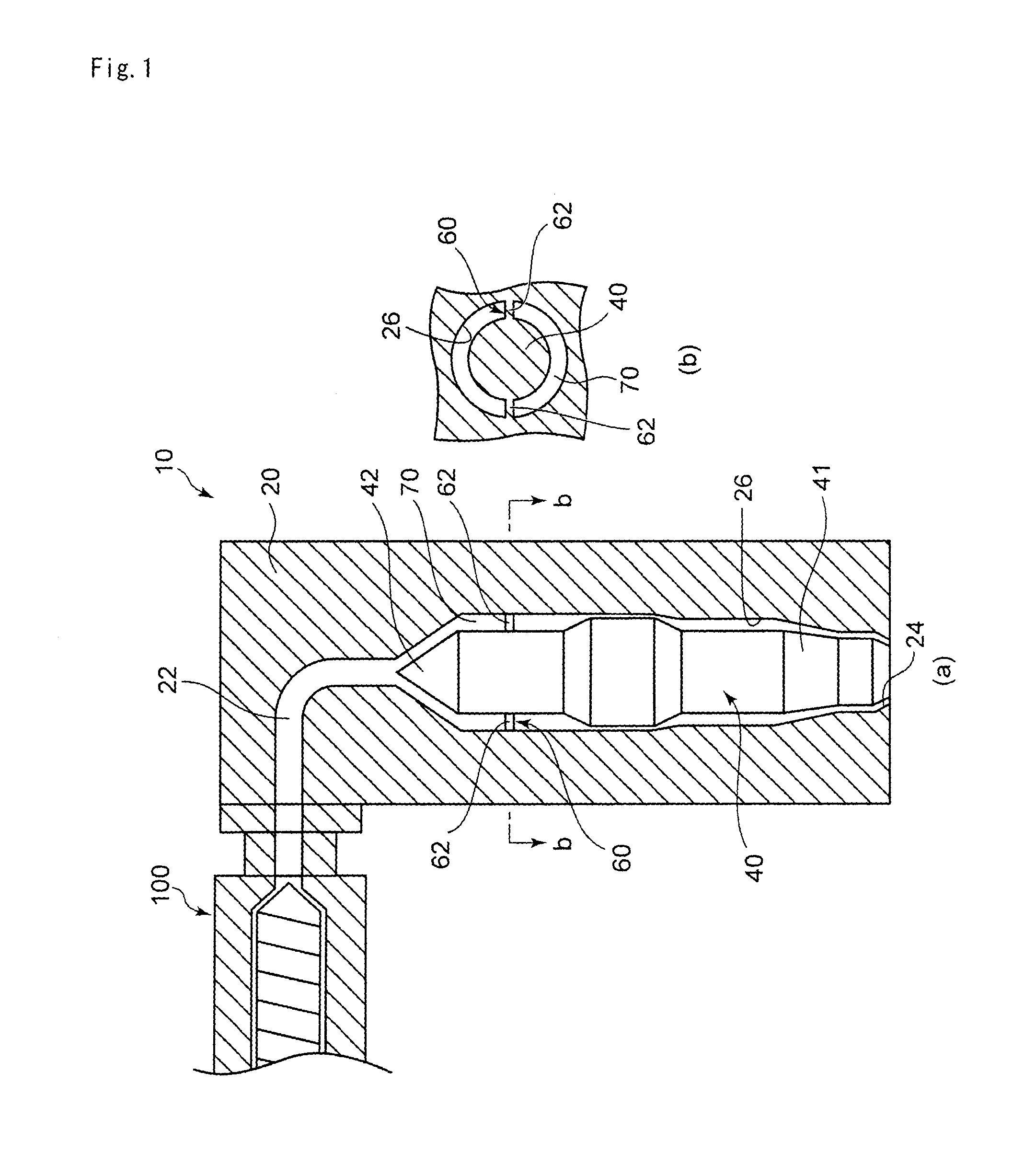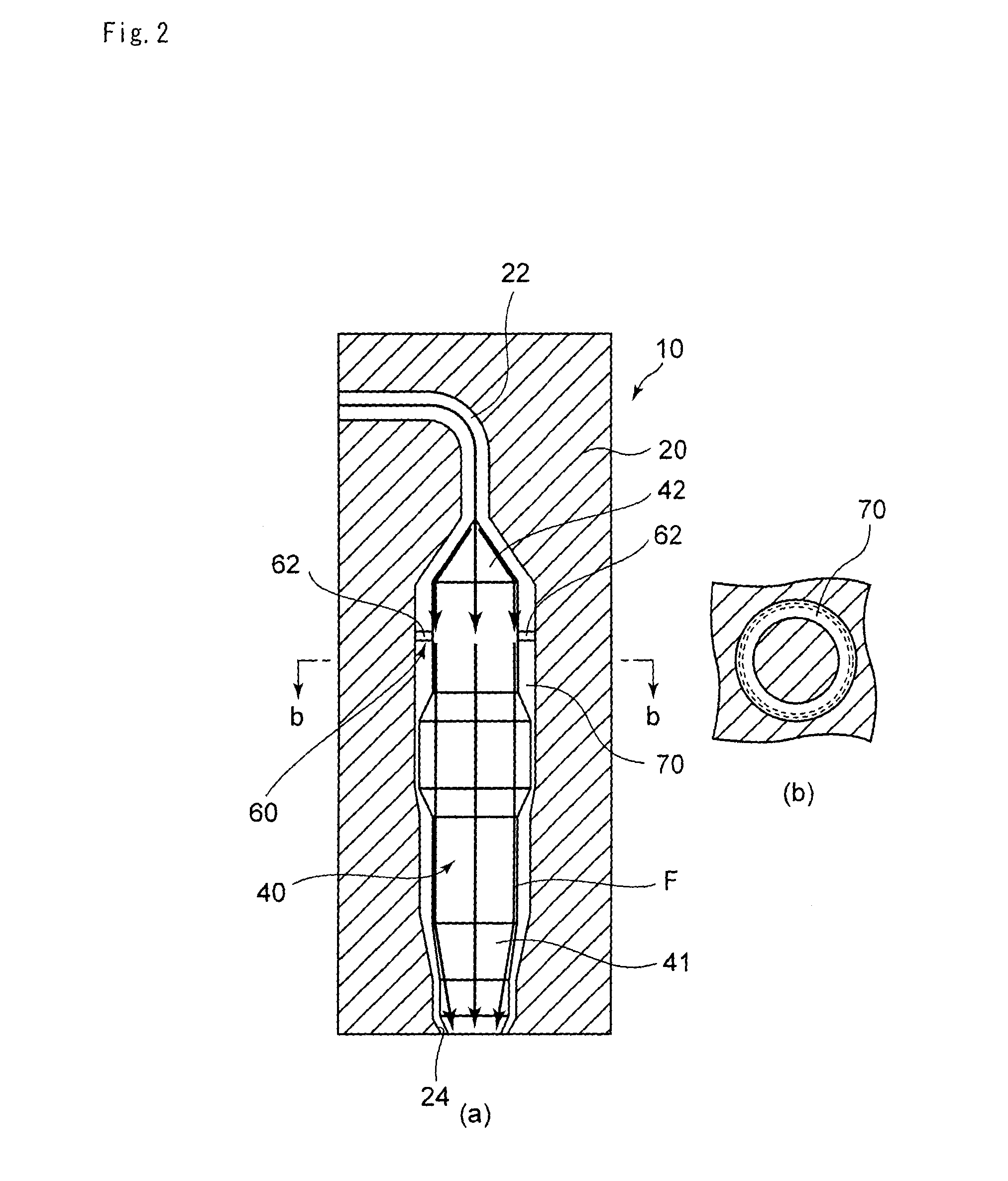Direct blow-molded container manufacturing method and package
- Summary
- Abstract
- Description
- Claims
- Application Information
AI Technical Summary
Benefits of technology
Problems solved by technology
Method used
Image
Examples
example 1
[0111]A device for forming a single-layer direct-blow molded container, which is equipped with a 55 mm single shaft extruder, a cylindrical die with the structure of FIG. 1, a mold, a mold clamping device, a cooler, and the like, was used. In the extrusion hopper, dry blend pellets of HDPE-1 / ADPE-1 / PA-1=85 / 10 / 5 (% by mass) were fed. The temperatures of the extruder cylinder, the adaptor, and the die were set to 210 to 235° C., 235° C., and 230° C., respectively. Subsequently, a parison was extruded at a screw rotation speed of 20 rpm. Then, a 400 mL columnar screw-capped bottle with a wall thickness of about 1 mm at the body was formed by direct blow molding.
example 2
[0112]Except for the mixing ratio rate of HDPE-1 / ADPE-1 / PA-1=80 / 10 / 10 (% by mass), a bottle was formed in the same manner as Example 1.
example 3
[0113]Except for the mixing ratio rate of HDPE-1 / LDPE-1 / ADPE-1 / PA-1=70 / 10 / 10 / 10 (% by mass), a bottle was formed in the same manner as Example 1.
PUM
| Property | Measurement | Unit |
|---|---|---|
| Percent by mass | aaaaa | aaaaa |
| Percent by mass | aaaaa | aaaaa |
| Percent by mass | aaaaa | aaaaa |
Abstract
Description
Claims
Application Information
 Login to View More
Login to View More - R&D
- Intellectual Property
- Life Sciences
- Materials
- Tech Scout
- Unparalleled Data Quality
- Higher Quality Content
- 60% Fewer Hallucinations
Browse by: Latest US Patents, China's latest patents, Technical Efficacy Thesaurus, Application Domain, Technology Topic, Popular Technical Reports.
© 2025 PatSnap. All rights reserved.Legal|Privacy policy|Modern Slavery Act Transparency Statement|Sitemap|About US| Contact US: help@patsnap.com



